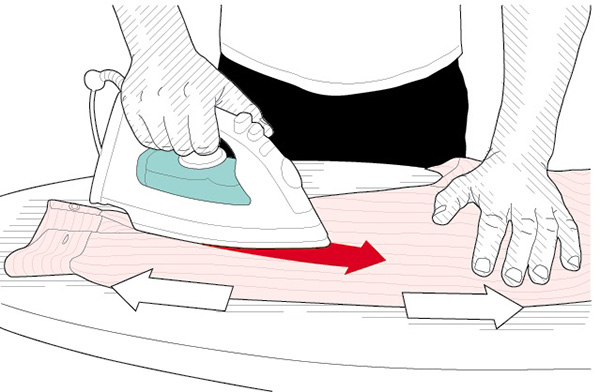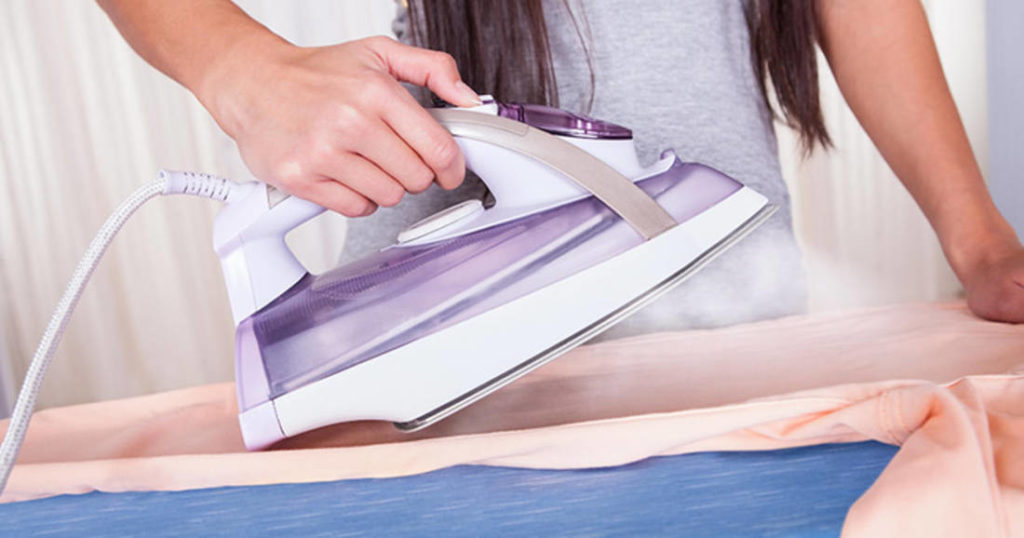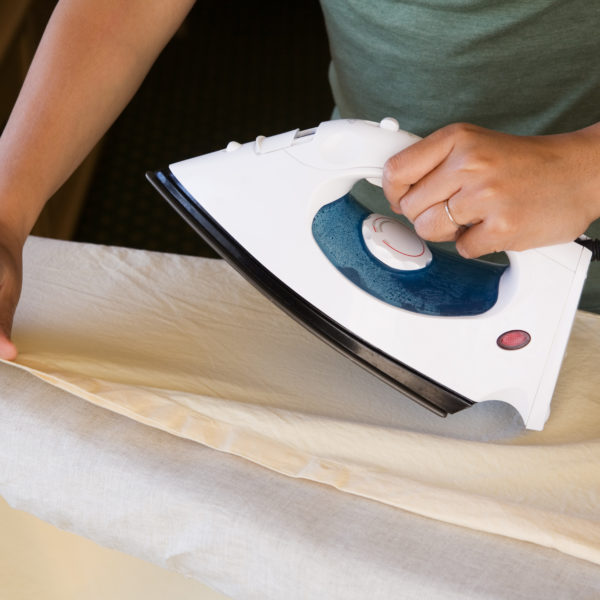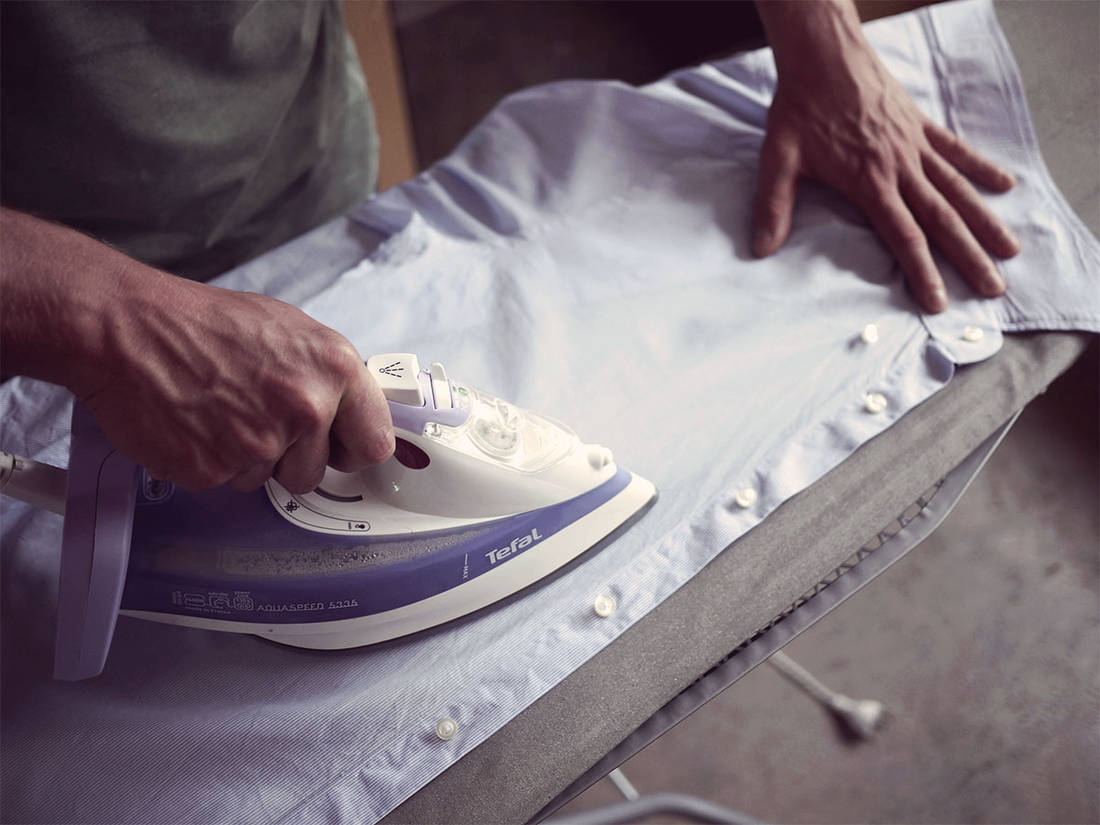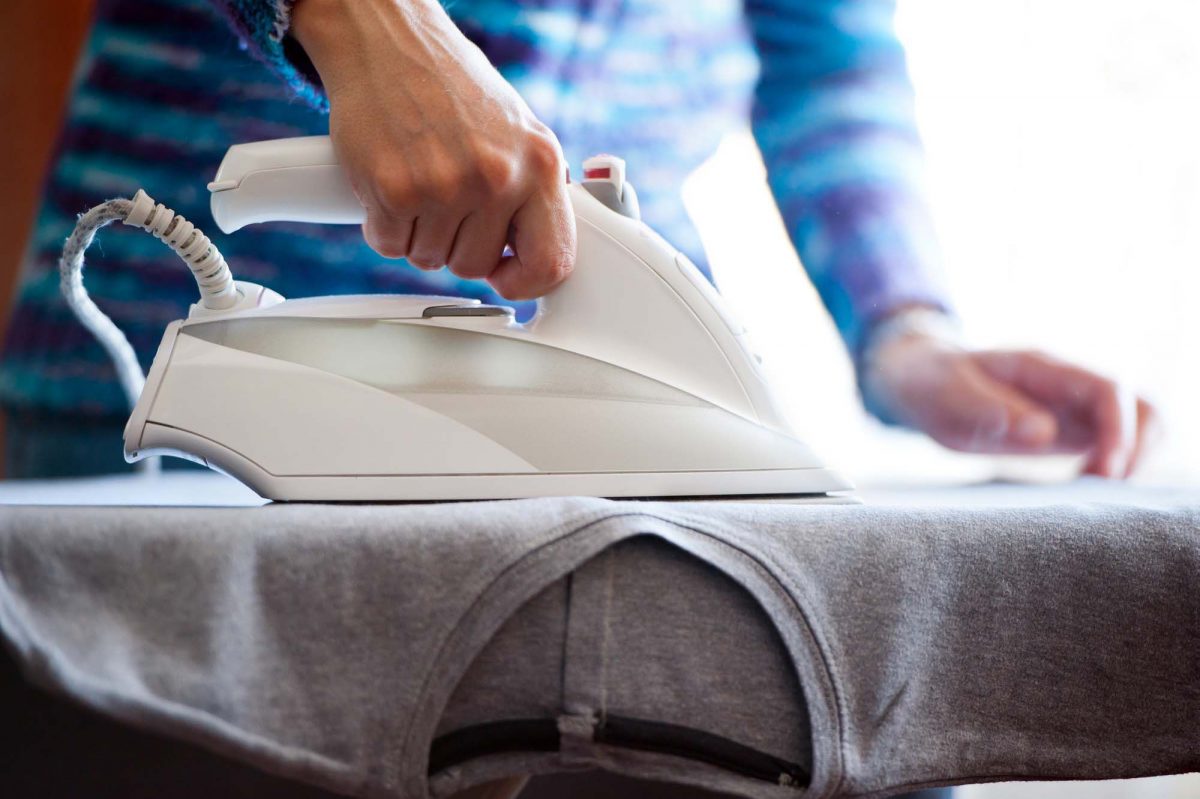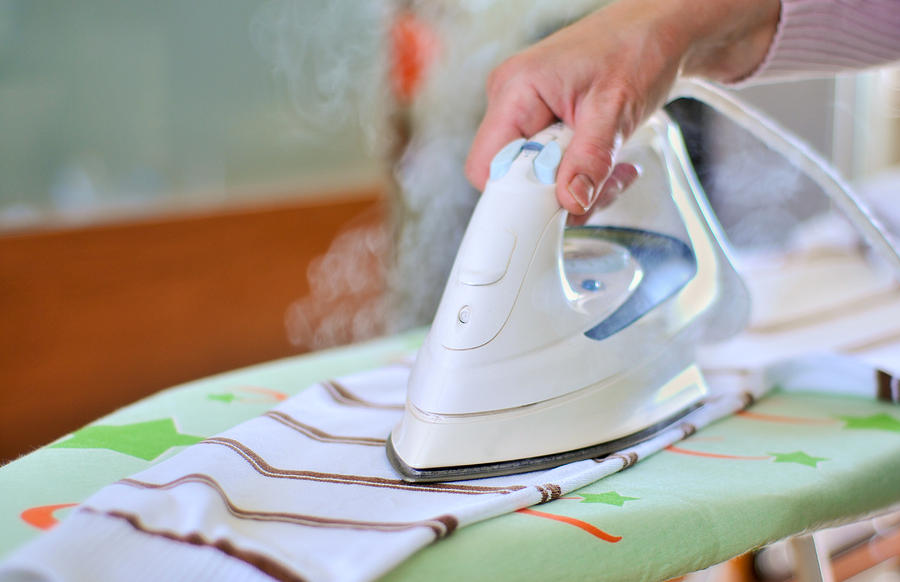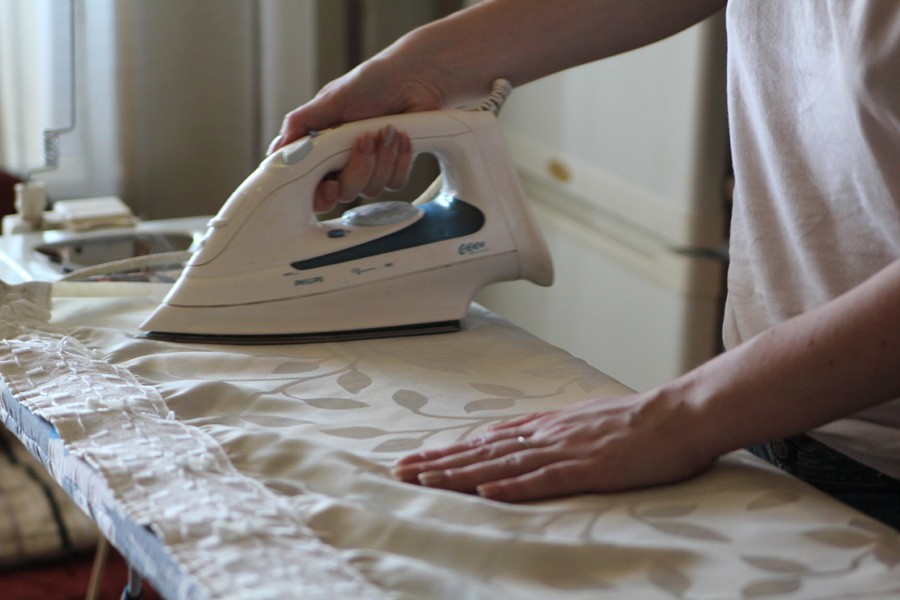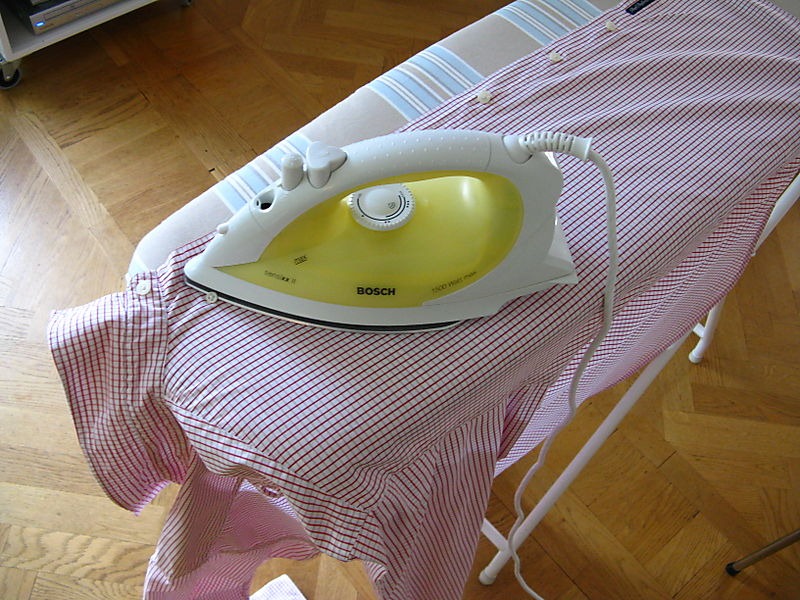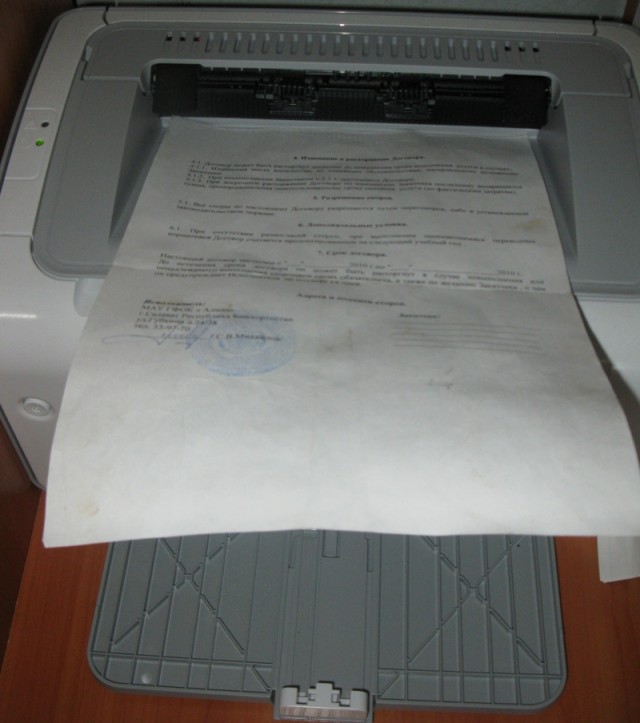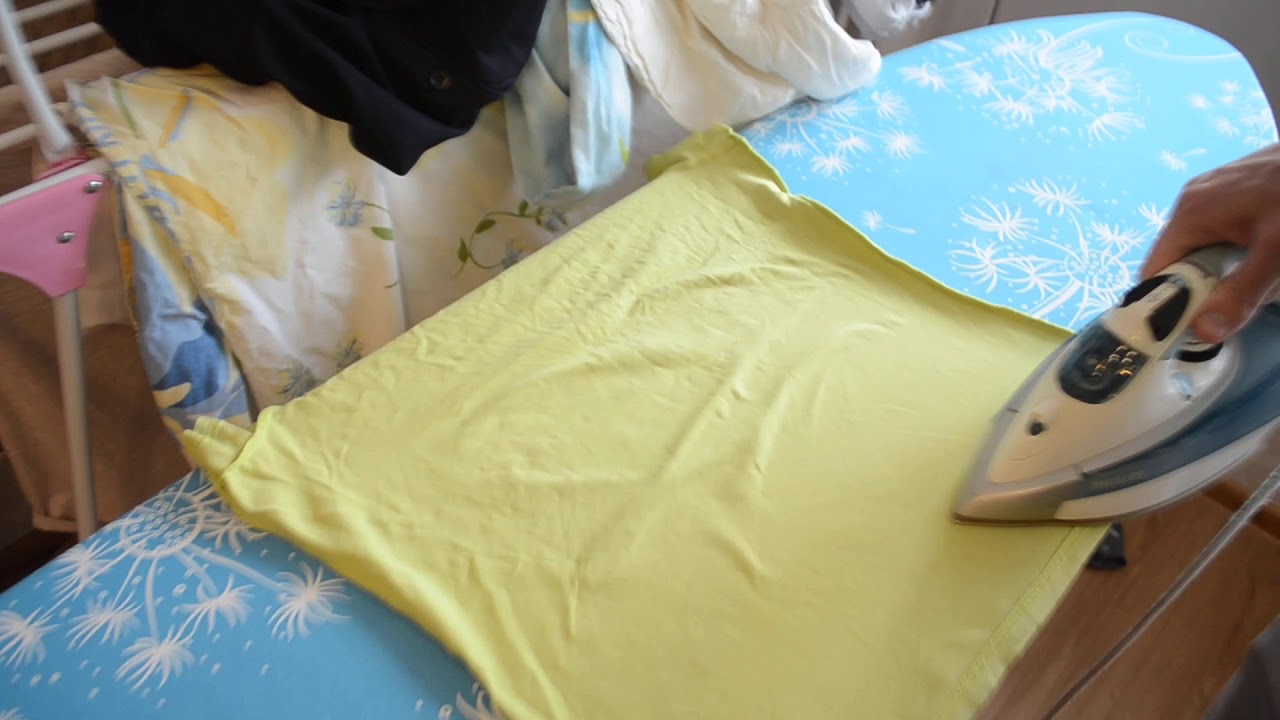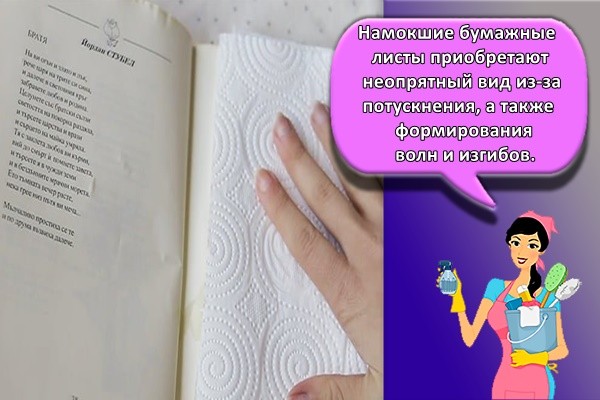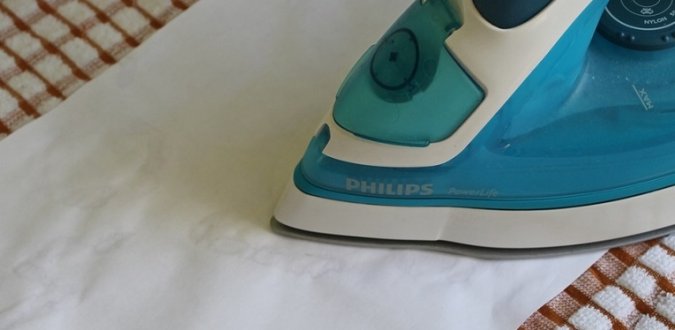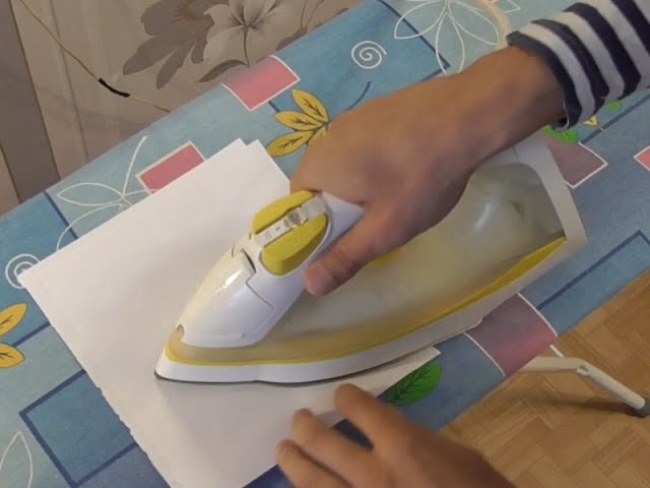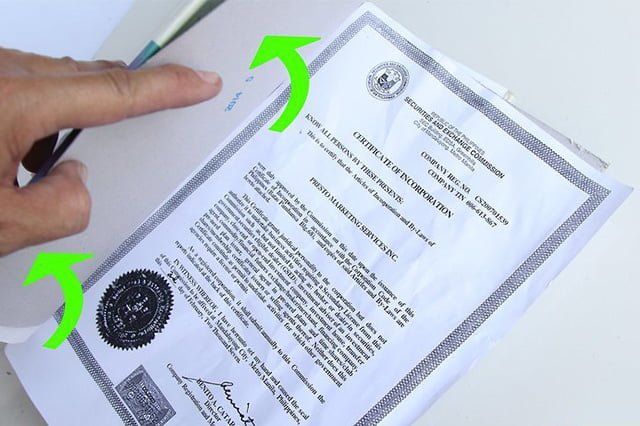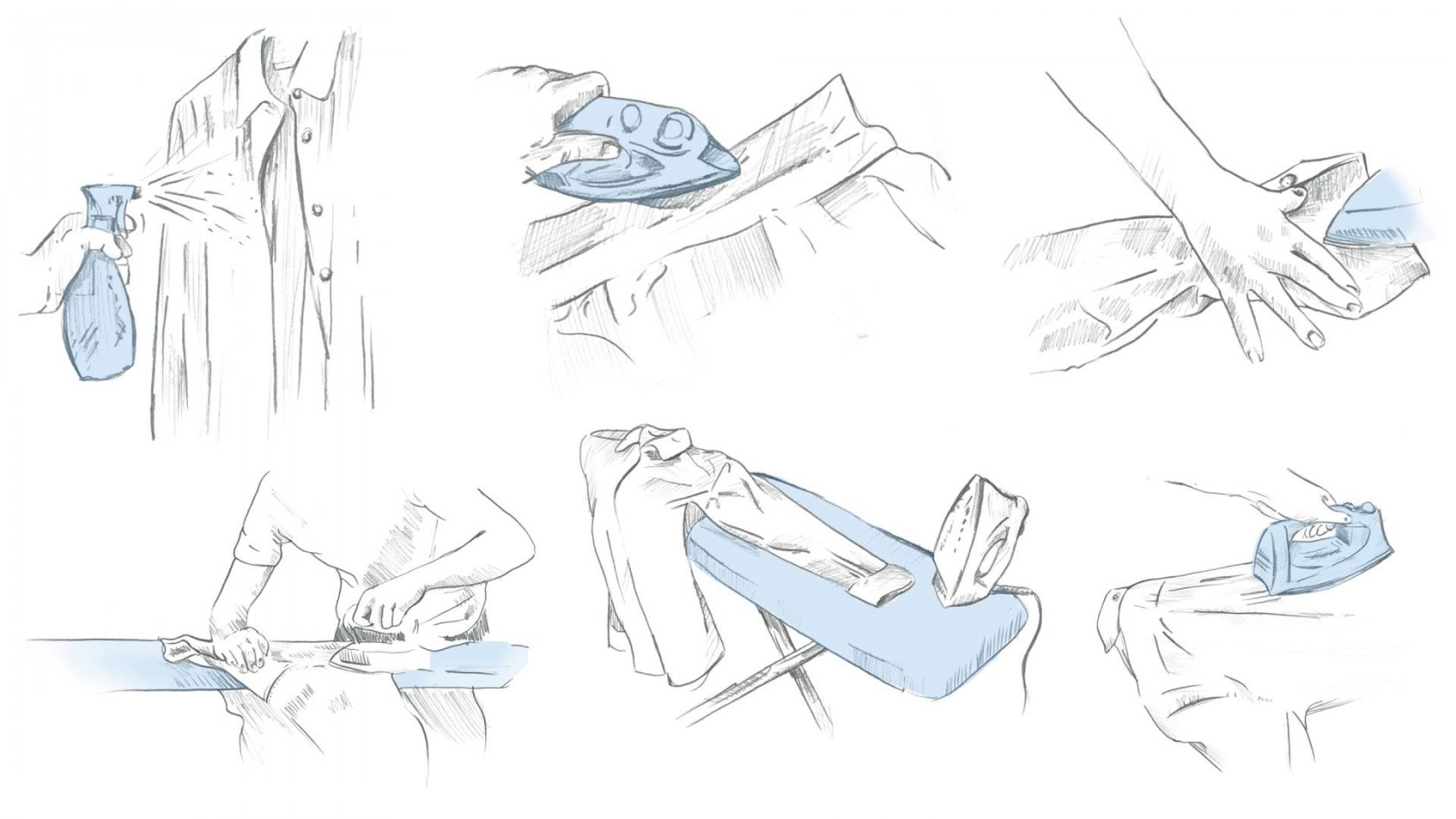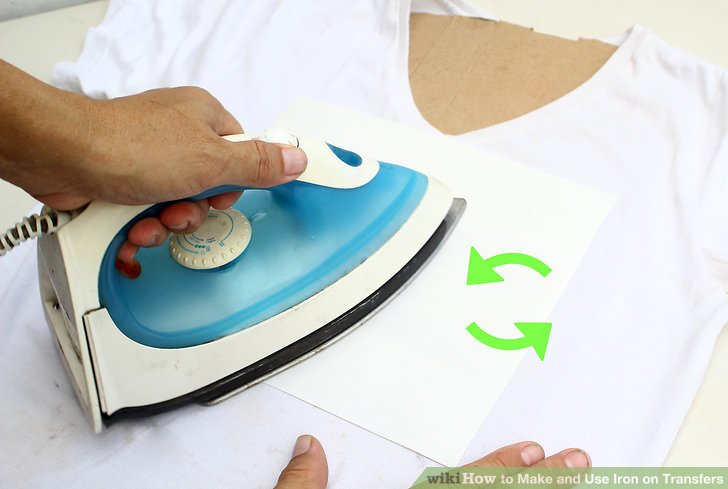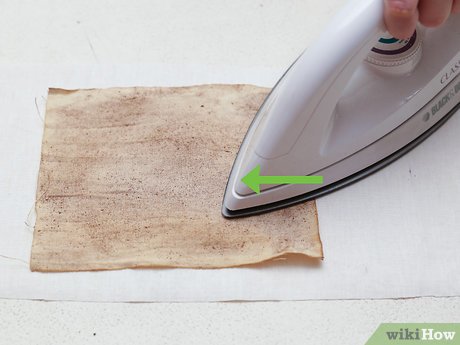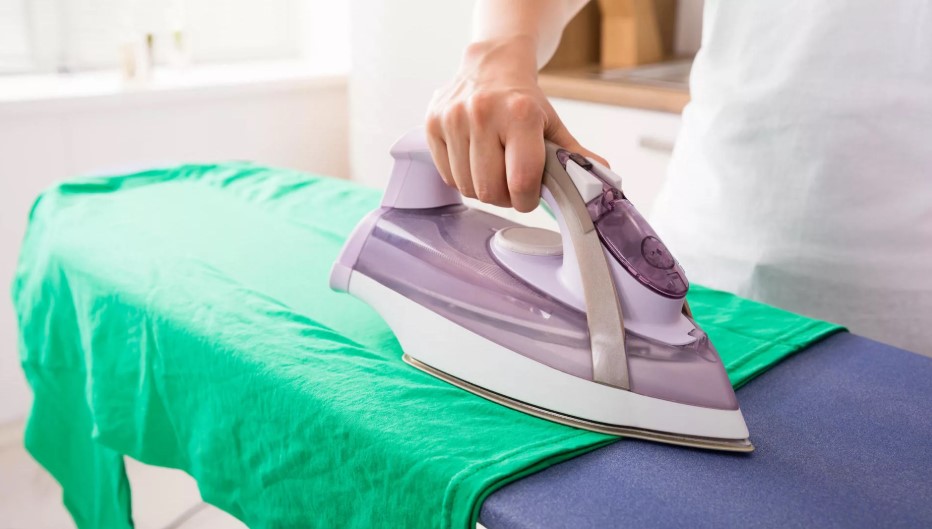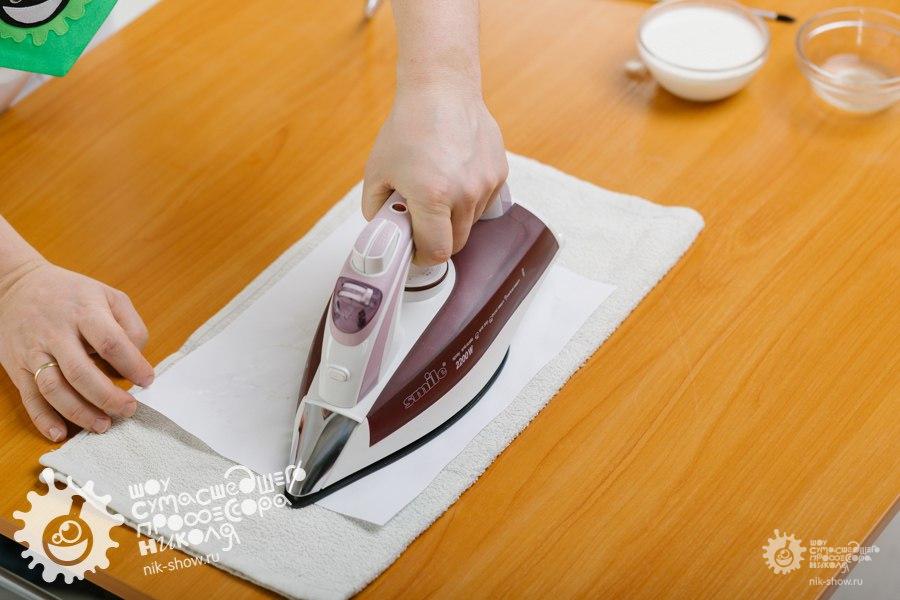Methods for smoothing out crumpled paper
- Using the press;
- Straightening paper with an iron;
- Straightening with a printer;
- Other methods.
Using the press
- Straighten the paper if it is wrinkled using a press. Using a press is a more gentle method, even suitable for straightening important documents, watercolors and whatman paper on a roll, but will take more time.
- To begin with, you need to hold the crumpled sheet against the edge of the table, carefully pulling it in order to align the sheet as much as possible.
- Then place the sheet on a clean surface face down, then moisten it with filtered water from a spray bottle, distribute moisture over the surface with a sponge.
- For denser specimens, it is necessary to moisten with water several times after a short amount of time.
- Cover the wrinkled paper with a clean, dry cotton cloth. These can be handkerchiefs, baby diapers that absorb moisture well. The more often you change a wet cloth to a dry one, the faster the sheet dries.
- Use heavy objects as a press, such as large books combined with furniture boards or heavy cardboard. The larger the paper size, the larger the board will be required. On a prepared sheet, covered with a cloth, you need to put a board with a stack of weighty books or other weight.
- The time spent under the press depends on the density of the sheet and its moisture content. Sometimes it is enough to leave it on for a few hours or overnight. The densest and wettest specimens dry up to four days. The process will go faster in a dry, ventilated area. To reduce the humidity in the room, use the air conditioner in dehumidification mode, fans and heaters.
- For a long time, you can put a dry crumpled page under the press. In this case, it will straighten, but traces of kinks may remain.
Straightening paper with an iron
You can flatten the sheets with an iron, but you need to act as carefully as possible. This method is not suitable for watercolor work: the work may turn yellow, paint may deteriorate
And it is better to test a particularly valuable document in a small area.
The iron must be set to the minimum temperature. High temperatures can also wash out inks and yellow the paper.
Place the document face down on the ironing board, and cover it with a clean, dry cloth (preferably a thin cotton swaddle or special ironing cloth). Iron the paper for one minute.
Lift the cloth to evaluate the result. If the sheet is still wrinkled, then you need to slightly increase the temperature and iron the paper again.
You can place several copies on a table or ironing board at once, cover with one cloth and flatten the sheets of paper at the same time.
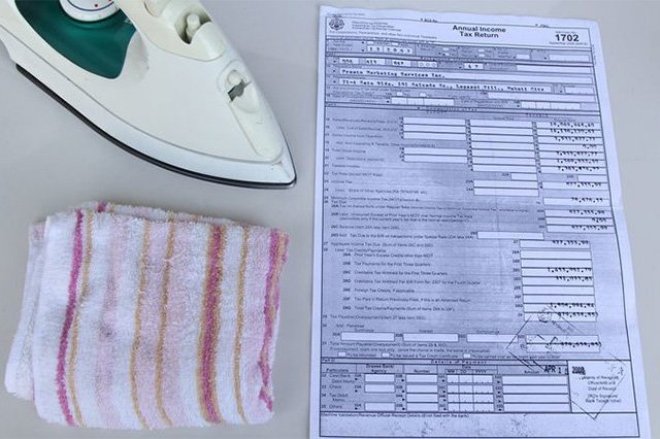
Straightening with a printer
- This method is suitable for the most common A4 sheets. There are printers for other formats, but these are less common.
- It is necessary to create a document with a blank sheet on the computer, then send this blank sheet for printing. Test on any other instance first.
- Then flatten the crumpled paper and carefully insert it into the printer, and pass it through the printer without printing. The printer will remove wrinkles and light creases.

Other methods
There are other methods that are more professional. If the value of the document is high, it is better to contact the restorers or specialists in professional paper restoration.
These helpful and simple tips will help you save time and money. Using little tricks, you ...
Many people prefer to wear a sheepskin coat instead of a fur coat in winter.Useful washing tips to help you maintain ...
MDF doors are in demand due to their resistance to moisture, high temperatures and ...
Can I use an iron?
You can use an iron to remove creases in the paper. However, the creases will not completely disappear. They will be visible, but the canvas itself will become flat.
Using steam or water will make the leaf smoother, but this increases the risk of spoilage. It will become not so strong, so it can tear both during processing and after it. In addition, high temperatures can fade ink.
To minimize the risks, you need to try to process a small section of the document. If nothing terrible has happened, you can proceed to the smoothing procedure.
The sequence of actions is as follows:
-
the sheet is leveled as far as possible and covered with a clean cloth;
- the iron is heated, but not much. The temperature on the regulator is set to the minimum. Otherwise, the leaf may turn yellow and brittle;
- when the iron heats up, it is applied to the fabric and ironed. Average exposure time - 1 minute;
- after processing, you need to check the status of the document. If there are still dents on it, you can slightly raise the temperature.
With regard to the thickness of the fabric, a material that is too thin will not work. It is best to use a terrycloth towel.
Having decided on such processing, it is necessary to assess all possible risks.
Moreover, if we are talking about an important document, for example, a passport. In this case, it is recommended to trust the professionals
Care Tips and Tricks
There are pleated skirts that are not recommended by the manufacturer for processing with an iron, you will need to carefully wash the product, dry it by hanging it on a hanger, straightening each fold with your hands
It is important to take into account the recommendations found on the sewn-in product label. If there is a crossed out iron symbol, it means that the skirt must not be ironed.
If it has an iron icon with an image of steam crossed out below it, the skirt must not be steam-treated.
To preserve the original appearance of the skirt, it is recommended to use special products designed for safe ironing. They contain special substances that prevent clothes from losing their original shape. The pleated cotton skirt can be starchy. This will allow it to become a little stiffer and not cause the material to wrinkle too much. If all the recommendations for the care of the pleated skirt are taken into account, it will look like new for a long time.
p> Share link:
Heavy abs

This method can take a long time to flatten the paper, but it is the safest. The whole "rescue operation" takes place in several stages:
Sprinkle the document with water. It acts as a glue that helps bond the fibers of the paper together. The document will become softer so that any wrinkled areas can be smoothed and straightened out. It is necessary to use purified water, tap water is saturated with various substances that can ruin the paper. Remember that the document has inscriptions, drawings, stamps. This means that ink, paint or other material may become blurry.
Such sheets should be moistened carefully from the clean side of the sheet. The use of water can be avoided altogether, but then only the largest creases will be eliminated.
Fix the wet sheet between layers of water-absorbing material. The resulting layered "cake" must be placed on a flat and hard surface, additionally smooth it and press down with a heavy stack of books or something similar. Let the paper dry completely. This will take several days. Replace the water absorbent material if necessary.
Features of working with tulle
Almost any veil is made of tulle. This is a rather capricious material that can break even with slight bending.Therefore, the veil is wrinkled during transportation or storage, which leads to the loss of its beautiful appearance. Tulle is a delicate material. It is quite lightweight, mesh and translucent. At the same time, its texture is tough, so if even a small crease appears, it will be difficult to cope with it.
But besides this, there is another feature - tulle is very difficult to perceive high temperatures. One has only to touch it with a strongly heated iron, the mesh will instantly crumble, leaving a burnt hole.
The tulle also needs preliminary soaking. This will save time on direct ironing, and if, after soaking, you hang the product on loops in a well-ventilated room, then ironing may not be required at all. Soaking is carried out in warm water, you can add a couple of drops of softener for delicate fabrics.
It is important to pay attention to the equipment that will be used in the work. So, the surface of the iron should be:
- perfectly clean;
- no traces of adhering fabric;
- no cracks, chips or scratches.
In the iron, the "Synthetics" mode must be set for working with tulle. It differs from usual in the minimum heating temperature.
Solving the problem urgently and quickly
If wrinkled paper needs to be smoothed out quickly, you can use the following guidelines:
- Roll the sheet on the edge of the table. This measure will help to deal with rough folds. This method is more suitable for paper that has been rolled up.
To align the sheet, you need to take it by the opposite edges, and then pull it up and down several times. It is necessary to control the pressing force so as not to tear the canvas.
Pass through a copier. It will compress the document like a press, and the creases will go away. The copier must be large, that is, professional. Such devices can be found in offices and copy centers.
You can smooth the paper with a weight. The folds will straighten out under the weight of the press. For this purpose, you can use such improvised items as:
- An encyclopedia or other massive book. To achieve the best effect, several volumes are imposed on the crumpled sheet at once.
- Heavy appliances or furniture.
- Equipment for sports.
Having chosen a suitable subject, you need to be guided by the following action plan:
- To smooth the paper better, it needs to be slightly moistened. Do not expose the sheet under running water.
It is better to use a spray gun, holding it at a distance of 30-40 cm from the object. If you don't have a spray bottle at hand, you can gently blot the paper with a damp cloth.
Water should be sprayed onto the back of the document to avoid damaging the paint.
The wet leaf is placed on a clean material that will act as a blotter. Ordinary napkins work well for this purpose.
In this form, the paper is placed under the load.
The result will be obtained in 12 hours. Sometimes after a specified period of time, the sheet remains wet. In this case, you need to change the napkins, leaving the document under pressure for another day. During this time, even a heavily moistened sheet will dry out and straighten.
How to iron paper
Take a towel or thick cloth, a spray bottle with distilled water. Do not use tap water as it contains certain minerals that will make the sheets hard and brittle.
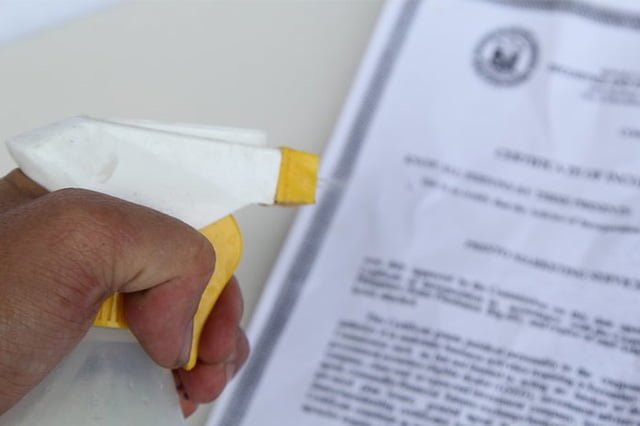
First, lay out the paper on the ironing board and straighten it with your hands. Cover the document with a towel or heavy cloth. Set the iron to the lowest temperature to avoid overdrying the garments and making the canvas brittle or yellow.
Then you need to gently smooth the crumpled paper with an iron through a towel or cloth. Check the result in a minute. If the sheet is not aligned, slightly increase the heating temperature of the iron.
If the sheet is too hot, dampen the back of the document with spray water.Then the product must be gently ironed again. Repeat the procedure until you achieve the desired result.
Canvases after watercolors, after chalk and ink that are not resistant to moisture must not be moistened with water! Increase the heating temperature of the iron gradually and start from the lowest one. Otherwise, when processing the hot temperature of the printed text, the latter will begin to melt. As a result, it will stick to the towel or fabric through which the document is ironed.

Do not use too much water when spraying, otherwise the text or graphics will float. Do not iron your passport or other document without a towel or cloth. Without this, the sheets will turn yellow and not smooth out. In addition, it increases the risk of fire and fire.
Under the press
The essence of the method lies in the fact that a sheet of paper is smoothed out under the weight of the load.
The cargo can be:
- books;
- heavy equipment;
- pieces of furniture;
- sports equipment;
- other heavy objects.
Mode of application:
- First, moisten the paper a little with clean water. The water will help smooth out damaged areas and soften the paper. It is convenient to do this by spraying water on it from a fine spray bottle, at a distance of about 40 cm. Another option is to gently, so as not to tear, walk over the sheet with a moistened and wrung out soft sponge. To wet the sheet, you can put a damp, but not wet towel on it for a while.
- You need to act very carefully, because water can wash out the paint applied to the paper. It is best to spray water on the back of the ink side of the paper.
- After the sheet is wet, straighten it with your hands and place it between two pieces of highly absorbent material. It can be blotting paper, paper napkin without embossing, felt and other options.
- After this procedure, the paper in the absorbent material can be placed under the press.
- Next, you need to be patient. Leave the paper for 12 hours and then check its condition. If it is still wet, replace the absorbent with a dry one. Even a richly moistened leaf should dry in three to four days.
- Lightly dampen the document with distilled water from a spray bottle at a distance of at least 30 centimeters. Alternatively, blot the sheet with a damp cloth;
- Remember that water will wash away chalk, water-based ink, and watercolors. In this case, moisten the back side of the sheet;
- If the watercolor paper is wrinkled, the water should not be used at all. Place dry sheets under the press;
- Place wrinkled paper between absorbent sheets, woolen felt, or other material that will absorb moisture. It is better not to use paper towels, as text or drawings can be imprinted on the product;
- Place the resulting pile on a firm horizontal surface and smooth it out with your hands. Then place heavy objects on top. It could be a stack of books or other cargo;
- Leave the paper to dry completely. Check every day to see if the sheets are dry. Change absorbent materials as needed. Slightly damp paper dries in one to two days, completely damp paper dries up to four days.
Leave in a well ventilated area, you can turn on the fan. Be sure to dry and gently separate pages that are stuck together if necessary.
You can also use the extreme method of drying your book in the refrigerator. To do this, remove moisture from the pages as much as possible with a towel, napkin and blotting paper. Then place the book in a ziplock bag and close.
There should be air in the bag. Place the book in the freezer and let it sit for one to two weeks. By the way, you can also stretch your shoes using the freezer. For more information on what to do if your shoes are small or tight, see here.
Do not dry sheets and books on a battery or under the influence of electrical appliances or direct sunlight! Otherwise, the image will fade, the ink will fade, the paper will turn yellow, and the paper will wavy.And so that the paper does not get wet or wrinkled, store documents in special files and folders, and books on the shelves in the closet.
Steam
You can iron things without an iron by steaming. The steam will perfectly smooth out all the folds on a thin fabric, but since the procedure is not quick and it is best to steam it at night. You will be very lucky if, in addition to an iron, your household has a steam generator, but not everyone has this expensive device. Therefore, for steaming with improvised means, consider the step-by-step following instructions:
- Put a wide basin in the bathtub and fill it with hot enough water to generate steam.
- Install a structure above the basin to keep things above the steam. This can be a clothesline or a sliding shower curtain bar.
- Hang up straightened items for 30 minutes.
- The thing will get wet and begin to straighten.
- Transfer clothes to a hanger and allow to dry completely.
How to dry and straighten books
Before drying and flattening a wet book, remove moisture from the sheets with a white towel or napkin and separate the pages. Place the book half-open and insert blotting paper between the sheets.
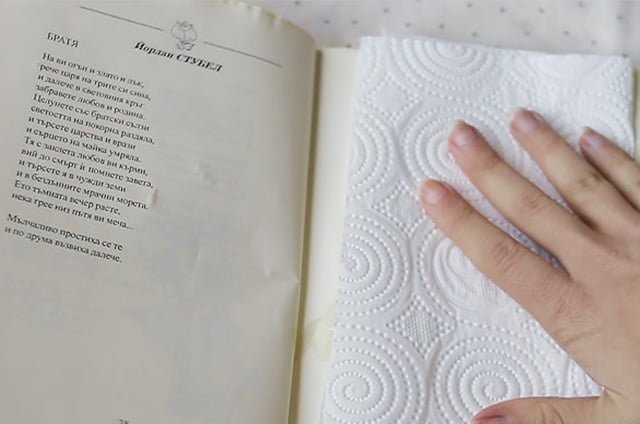
Leave in a well ventilated area, you can turn on the fan. Be sure to dry and gently separate pages that are stuck together if necessary.
You can also use the extreme method of drying your book in the refrigerator. To do this, remove moisture from the pages as much as possible with a towel, napkin and blotting paper. Then place the book in a ziplock bag and close.
There should be air in the bag. Place the book in the freezer and let it sit for one to two weeks. By the way, you can also stretch your shoes using the freezer. For more information on what to do if the shoes are small or tight, see.
Do not dry sheets and books on a battery or under the influence of electrical appliances or direct sunlight! Otherwise, the image will fade, the ink will fade, the paper will turn yellow, and the paper will wavy. And so that the paper does not get wet or wrinkled, store documents in special files and folders, and books on the shelves in the closet.
Quite often it happens that it becomes necessary to smooth out paper that has been crumpled into a ball for one reason or another. But not everyone knows how to do it.
This is especially important in cases where you have crumpled up an important document that is valuable. But for this it is worth using the methods and recommendations correctly that will help make crumpled paper beautiful and even.
Each method is different, but they also have a similar part, which will make it possible to return the sheet to its original beautiful appearance.
To do this, you just need to be patient and perform all actions correctly and accurately. Do not be afraid to do something wrong, because in fact there is nothing difficult about it, you just have to try.
How to properly starch at home?
You can starch garments both in specialized ateliers and at home. The second option does not cause any particular difficulties and does not require serious labor costs.
Hot method
The essence of the hot method has been described above. To starch a headdress you will need:
- Mix water and starch in proportions that are determined depending on the desired hardness.
- Heat the rest of the water over a fire, bringing to a boil.
- Add a starch solution to boiling water and wait until the mixture thickens.
- Wait until the resulting paste has cooled down (five minutes is enough).

There is another method that will require:
- Mix one tablespoon of rice starch with 200 ml of water.
- Bring 800 milliliters of milk to a boil.
- Gradually pour the starch solution into the hot milk.
- Dip the hat into the resulting composition for 20 minutes.
To add shine to the hat, it is recommended to add a pinch of salt to these mixtures.
Cold method
This method is recommended for those who have not previously performed such a procedure.To give the headdress the desired shape, you need to mix 1.5 tablespoons of starch and 500 milliliters of water at room temperature. The resulting solution is then applied with a brush to the product from both sides. After the procedure, the hat is left to dry.
Dry method
The dry (also known as military) method is used for knitwear. The "clean" starch should be applied to the hat, evenly covering each thread. After that, the hat should be sprinkled with water from a spray bottle. At the end of the procedure, the product must be covered with white paper to dry.
In the microwave
This original way speeds up the procedure. To achieve the desired result, you will need to mix 2 tablespoons of starch and a liter of water. The resulting solution is then poured into a container in which the workpiece is placed. Next, the container is placed in the microwave for 5 minutes. The device must be set to full power. At the end, the headpiece is left to dry.
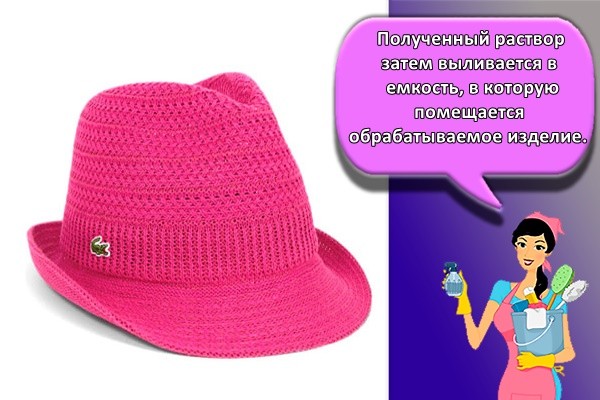
How to properly smooth a veil
There are various ways for smoothing a veil. But, alas, there is no universal one. For some products, a hairdryer or a spray bottle is suitable (usually those that are decorated with beads, sequins), while others can be ironed with an ordinary iron, after placing napkins or a thin towel on the fabric.

With iron
You can iron a tulle veil with an iron, but this is done very carefully. The first thing that needs to be done is to set the required temperature range on the iron.
If you look at the marks, then it should be on a one or two, a mode for synthetics or delicate fabrics. The one usually copes, but if the creases are serious, then they go to the two.
Next, you need to persuade additional fabric. Materials created specifically for ironing synthetic soft fabrics are sold in specialized stores, and can also be ordered via the Internet. But if this is not possible, then ordinary gauze will do. It is folded in several layers, placed over the entire surface of tulle.
The tulle veil is placed on a flat surface, covered with several layers of gauze and ironing is started. It is advisable to check on the most inconspicuous part of the veil exactly how the material will behave when exposed to temperature. In extreme cases, if there is a burnt place, it can be masked with a brooch or curls of hair.
Hairdryer and spray
This method is used if the creases are not too strong, there are decorations on the veil that can simply melt from the influence of the iron. Warm water is drawn into the spray bottle, you can drop a couple of drops of the composition for soft tissue
They are evenly distributed over the material, paying special attention to the most problematic areas. After that, proceed to drying with a hairdryer.
It is kept no closer than 15 centimeters from the fabric, the jet should spread evenly. Strongly hot air is not used, as it can damage the fibers of the fabric.

Hot bath and shower
One of the easiest and most effective ways is to hang a veil in the bathroom. You need to close the doors tightly and turn on the tap in the bathroom with hot water. Naturally, hot air should not get directly onto the veil - it will burn the fabric and spoil its structure. For ordinary tulle, 15 minutes of such exposure is enough. The main thing is that there are no foreign smells in the bathroom or shower. If they get caught with the help of hot air into the texture of the fabric, it will be difficult to get rid of.
Hot kettle
Using a hot kettle is convenient if local exposure is required. Clean water is boiled, a certain place on the veil is brought to the spout of the kettle. The main thing is to hold the fabric and not allow it to be less than 15 centimeters from the spout.
Steam generator
A dedicated steamer initially saves time. It is used not only for smoothing tulle, but also for other delicate fabrics.For example, the device will cope with silk, velveteen, help to smooth a jacket made of genuine leather or leatherette, and process a fur outer garment. Steam generators cost a lot, their price is approximately equal to the average iron. But for those who prefer to dress in exquisite fabrics, such an acquisition is necessary. The steamer is used with a thing that is placed strictly vertically. A regular hanger is used, the veil is firmly secured with pins or hairpins.
Clean water is poured into the steam generator, connected to the network. Wait until the corresponding signal appears on the achievement of the required values - then it will start producing steam. They work up and down with the steam generator, do not produce unnecessary movements. Haste is not appropriate, in order to steam a thing, you need to hold the device for 2-3 seconds over a certain location. But you cannot leave it for 10 seconds, since the structure of tulle can be damaged.
Wear protective gloves on your hands so as not to accidentally get burned by the steam. Under no circumstances should the flow of steam be directed to the face area. If the veil has sequins, beads, then it is impossible to act on them for a long time with a steam stream - they can come off, or the color becomes not so bright, the paint peels off.

Contacting specialists
To get an excellent result without risk, contacting specialists will help. They use special steamers that have a high degree of efficiency, but at the same time are absolutely safe for delicate fabrics. Of course, you will have to pay for the services, but to look impeccable at the wedding ceremony is worth it.
Prevention of the appearance of folds and creases
In order for the veil not to lose its beautiful appearance, before the bride shines in front of the groom and her closest people, you need to follow some recommendations. Direct ironing alone will not be enough for the veil to retain its appearance until the wedding. You need to learn how to store it correctly. Just putting it in a closet with other things is not a suitable option. So the veil will become unusable, and creases and folds will again appear on it, which are difficult to remove. Several ways have been developed to preserve an ironed veil before the wedding:
- covers for a wedding dress - if space permits, then the veil is placed in a cover for the dress, so it will retain its freshness;
- special cover - for a large decorative veil or with a lot of beautiful additional details make the cover separately;
- a homemade bag - great if the house has a sewing machine - you can sew the cover yourself in a few minutes like a regular duvet cover, but smaller, in extreme cases, plastic bags are used for storage.

Only a completely dry product is placed in bags or a cover. If you put wet inside, then it is more likely to wrinkle.

